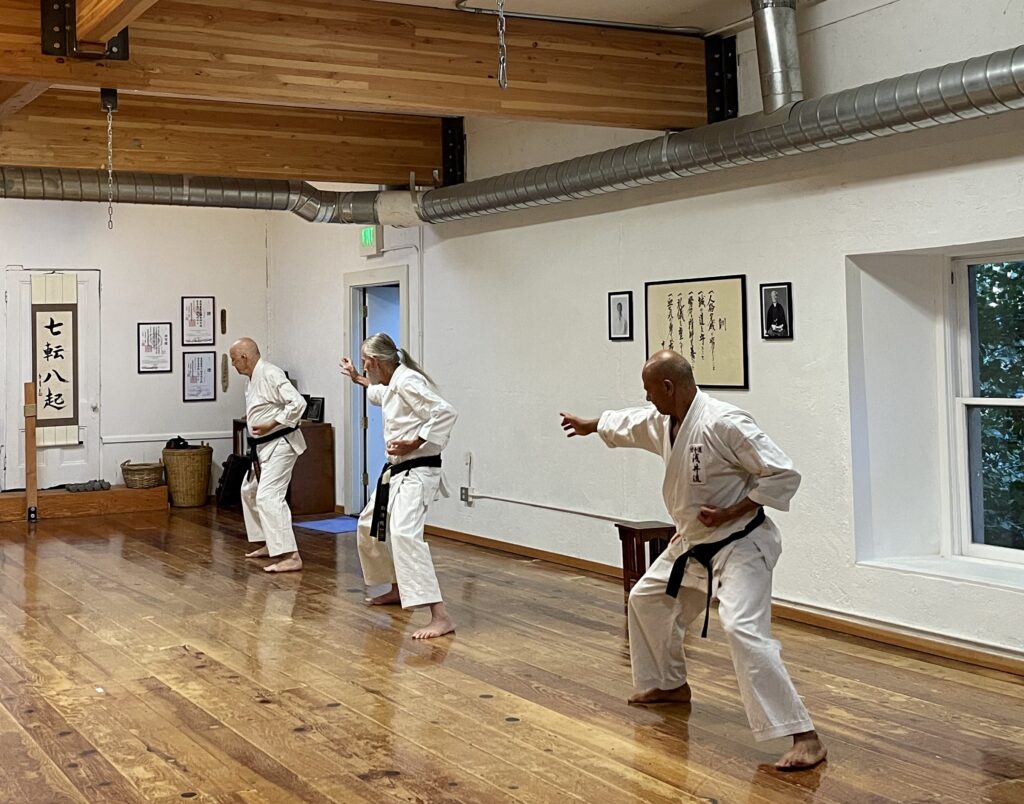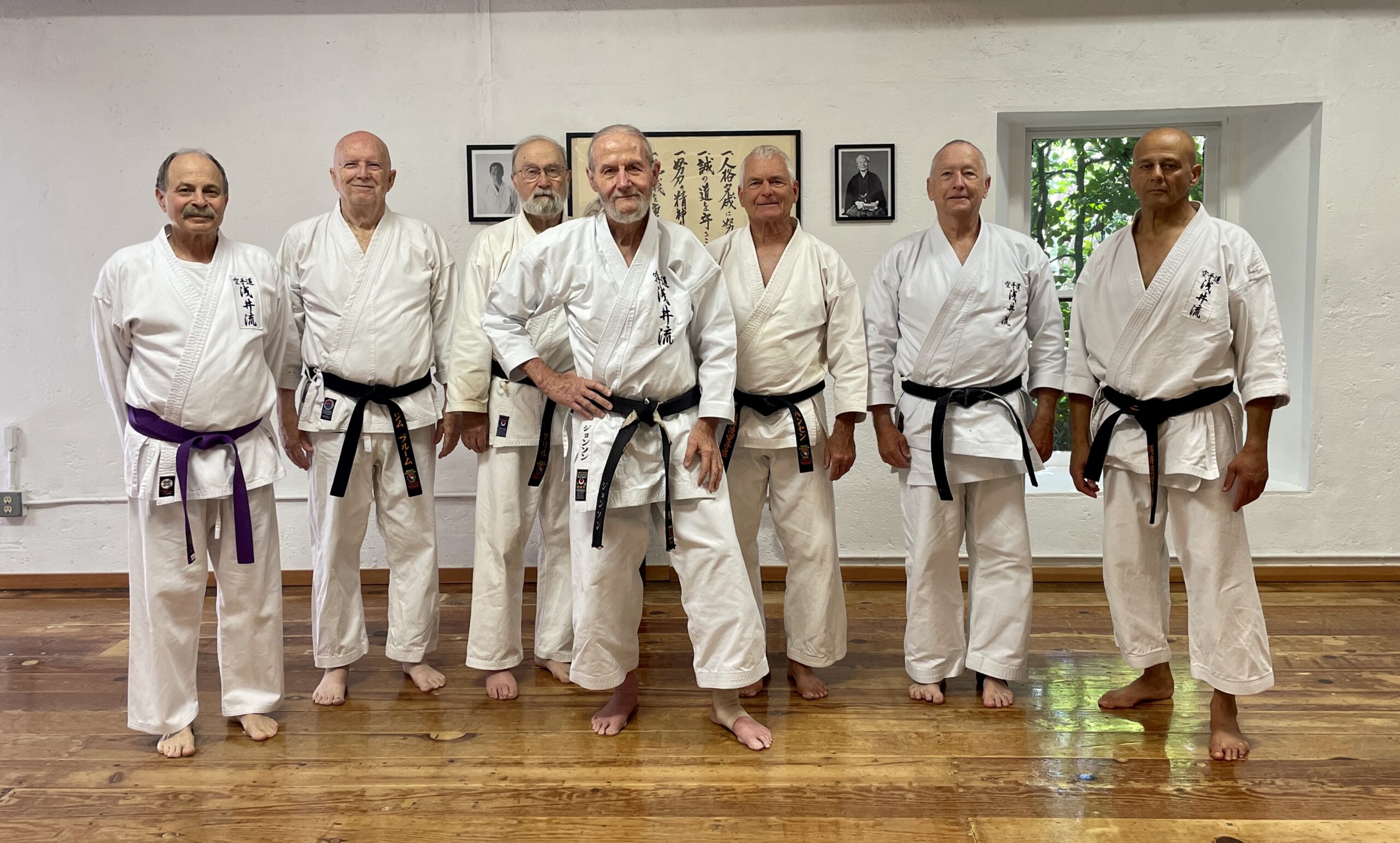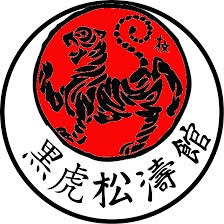About Our Classes and Our Approach

The purpose of training is not to achieve a certain rank or belt. Sierra Shotokan takes a much more holistic approach. Our focus on training is about developing self-confidence, kinesthetic awareness, and how to shift perspective and attitude.
Training is usually divided into three distinct yet inter-related parts with equal importance in the curriculum: kihon (basics), kata (forms), and kumite (sparing). The integration of these elements form a typical class session. Physical conditioning is also emphasized. Classes are usually ninety minutes in length. Instruction is focused on the current skill level of the individual, whether they are at the level of beginner, intermediate or advanced. To accomplish this teaching approach, classes may at times be divided and the curriculum is varied. It is strongly suggested that the karateka attend at least three classes per week.
Shotokan techniques are taught in a progressive manner so the individual can build skills and so the individual is able to learn where they need the most practice. Training can be rigorous but is also paced to the individual.
Kihon is the training of basics. The basic methods of blocking, punching, striking, and kicking are taught. In addition to learning the techniques through repetition, the karateka is taught application (see kata).
Kata is described as a set of predetermined moves and techniques organized to simulate defense and to counter attack from imaginary opponents. These exercises are common to all martial arts practice. It is here that the basics (kihon) become applied. A typical kata consists of punches, kicks, blocks, and strikes. As the student advances, the kata become more complex with increased variation in applications and additional kata are taught. Bunkai (analysis) and oyo (application) are demonstrated, thereby allowing the student to further understand kata.
Kumite (sparring) is the practical application of karate with an opponent or opponents. Beginners are first exposed to this exercise through basic one-step moves with prearranged targets and defenses. As the individual advances, one-step sparring becomes more complex and challenging. Basic one-step free sparring is common at the Brown belt level. Free sparring and sparring against multiple opponents is the last to be learned and occurs at the Black belt (Dan) level. At all levels of kumite, the principle of Ikken Hissatsu (one punch is the last punch) is emphasized.
The principles and understanding of self-defense and bujutsu (application) are woven into all classes. As the student progresses, they are exposed to key Japanese terms and definitions. A complete syllabus of karate terms will be made available to all students.
As the karateka masters the various levels of kihon and kata, formal ranking can be accomplished through examination. This is not required, but it is encouraged to further promote a sense of progress and accomplishment.



